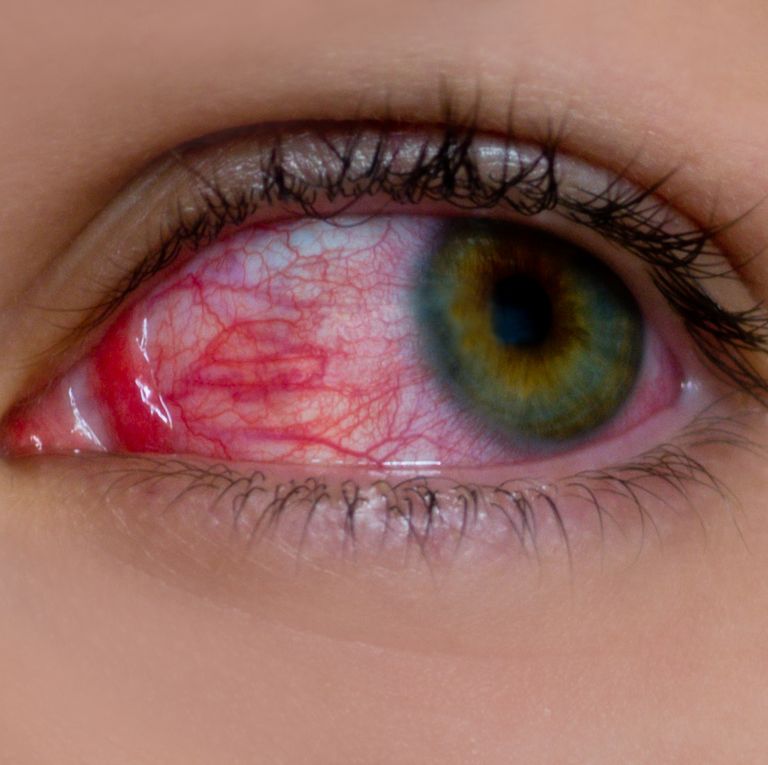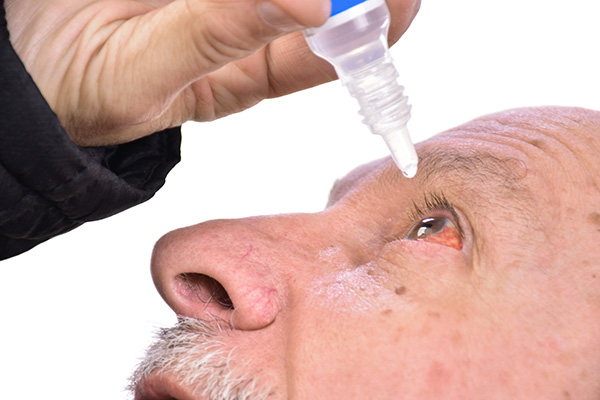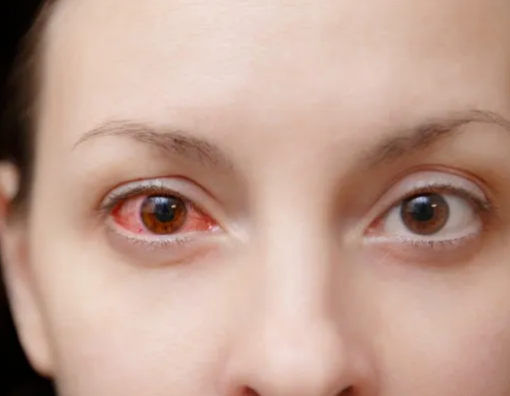Does the white of your eye or the inner eyelid appear pink or reddish? Do you have more tears than usual? Do your eyes feel itchy and burning, and you have green or white discharge from the eye? If yes, then you may be suffering from conjunctivitis or pink eye. But, what is conjunctivitis?
Conjunctivitis, often referred to as pink eye, is an eye condition in which the conjunctiva becomes inflamed. The conjunctiva is the thin transparent layer covering the white part of your eye and lines your eyelid. The small blood vessels in your conjunctiva are more visible when they are inflamed, causing the whites of your eyes to look reddish or pink. It is commonly caused by a viral or bacterial infection or an allergic reaction. In babies, it is caused by a blocked tear duct. Although pink-eye can be annoying and uncomfortable, the condition rarely affects your vision. However, pink-eye can be very contagious, so diagnosis and treatment in a timely fashion are important to limit its spread.
Want to learn more about conjunctivitis? Here is everything you need to know about it.
Understanding conjunctivitis
Conjunctivitis occurs when the conjunctiva is irritated by an allergy or infection. When you have conjunctivitis, your eyes are inflamed (red and swollen), and sometimes have a sticky discharge. Conjunctivitis can happen in one or both eyes.
Children get it a lot. Since the condition can be extremely contagious, it spreads rapidly in daycare centers and schools. However, conjunctivitis is rarely serious and it is very unlikely to damage your vision, particularly if you find it and treat it quickly. If you do all the things your doctor recommends, you can limit its spread and it will clear up with no permanent problems.

Causes of conjunctivitis
Conjunctivitis has various causes, including:
- Viruses
- Allergies
- Bacteria
- A chemical splash in the eye
- A foreign object in the eye
- In newborns and babies, it is caused by a blocked tear duct
Conjunctivitis has several types, which are based on its cause. Here are the types of the condition:
- Viral conjunctivitis is the most common and the most contagious form of conjunctivitis. It is caused by a virus, like the common cold. This type of conjunctivitis can occur along with colds or symptoms of a respiratory infection. It tends to start in one eye and causes lots of tears, as well as watery discharge. The other eye will get involved within a few days. Viral conjunctivitis often clears up on its own within several days without treatment.
- Bacterial conjunctivitis is also very common. It is caused by bacteria and is very contagious. Wearing contact lenses that are not cleaned properly or are someone else’s can cause it. This type of conjunctivitis often infect one eye, but can also show up in both. If left untreated, it can cause serious damage to the eye.
- Allergic conjunctivitis is a response to an allergy-causing substance, dust, and animal dander. it usually affects both eyes and causes intense itching, inflammation, and tearing of the eyes. You may also experience sneezing and watery nasal discharge.
- Ophthalmia neonatorum is a severe form of conjunctivitis that occurs in newborns. It can be caused by dangerous bacteria and have to be treated right away to prevent permanent eye damage or even blindness.
- Giant papillary conjunctivitis is associated with long term use of artificial eyes or contact lenses. Doctors think that this type of conjunctivitis is an allergic reaction to a chroming foreign body in your eye.
- Conjunctivitis resulting from irritation is caused by a chemical splash or foreign object in your eye. In most cases, cleaning your eye to get rid of the chemical or object causes redness and irritation.
Risk factors of conjunctivitis
The risk factors for conjunctivitis include:
- Exposure to someone infected with the contagious types of conjunctivitis (viral and bacterial)
- Using contact lenses, particularly extended-wear lenses
- Exposure to something for which you are allergic (allergic conjunctivitis).
Signs and symptoms of conjunctivitis
The signs and symptoms of conjunctivitis can be different depending on the cause of the inflammation. In general, the signs and symptoms may include:
- The feeling that something is in your eye
- Redness in the white of the eye and/or inner eyelid
- More tears than usual
- Discharge from the eye, usually green and white in color
- Swollen conjunctiva
- Thick yellow discharge that crusts over the eyelashes, particularly after sleep. This yellow discharge can make your eyelids stick together when you wake up.
- Itchy eyes
- Burning eyes
- Blurry vision
- Swollen lymph nodes
- Increased sensitivity to light
While some types of conjunctivitis can subside on their own, it is a good idea to go see a doctor if:
- Your vision is affected by conjunctivitis
- There is a lot of yellow or green discharge from your eye, especially if your eyelids stick together in the morning
- You have a high fever, face pain, shaking chills, or vision loss
- You have severe pain in your eye when you look into a bright light
- The symptoms remain mild, but the redness does not improve within 2 weeks.
If your newborn has conjunctivitis, it is important that you go to your doctor right away as it could permanently damage your baby’s vision.
Treatment of conjunctivitis
Treating your pink eye depend on the type of conjunctivitis you have.
If you have viral conjunctivitis, there are no specific treatments as your body fights the virus on its own and it will go away in several days. You can make your eyes feel more comfortable by placing a wet washcloth on your eyes. Bear in mind that it can be very contagious, so do everything you can to prevent it from spreading.
If your conjunctivitis is caused by bacteria, you may need to take antibiotics in the form of eye drops, pills, or ointments. You may need to apply the eye drops or ointments around 3 to 4 times a day for 5 to 7 days. Even if the symptoms go away, make sure to take or use it as instructed by your doctor.
If you have allergic conjunctivitis, it should improve once you treat your allergy and avoid allergens. Antihistamines may be able to give relief in the meantime.
If your conjunctivitis irritants caused your conjunctivitis, you have to wash the substance from the eye using water for around 5 minutes. Your eyes should begin to improve within a few hours. However, if your conjunctivitis is caused by alkaline or acid materials, rinse your eye and call your doctor immediately.

Preventing conjunctivitis to happen to you
To reduce your risk of getting conjunctivitis, you should take the following precautions:
- Cover your nose and mouth when sneezing or coughing
- Wash your hands frequently
- Never share personal items
- Wear swim goggles when swimming
- Do not touch or rub your eyes
- Remove contact lenses before showering
- Clean surfaces, such as countertops, faucet handles, and bathroom surfaces, using an antiseptic cleaner frequently
- If you wear contact lenses, use contact lenses solutions properly and clean them frequently.
- If you suffer from seasonal allergies, ask your doctor what you can do to minimize the symptoms.
Preventing conjunctivitis from spreading
Practicing good hygiene is one way to spread conjunctivitis. For example:
- Wash your hands frequently
- Do not touch your eyes with your hands
- Do not share towels and washcloths
- Change your washcloth and towel every day
- Change your pillowcases frequently
- Throw away your eye cosmetics, such as eyeliner and mascara
- Do not share personal eye care items and eye cosmetics.
Preventing conjunctivitis in newborns
Newborns’ eyes are vulnerable to bacteria that are usually present in the mother’s birth canal. While the bacteria causes no symptoms in the mother, it can sometimes cause a serious form of conjunctivitis in infants, which is known as ophthalmia neonatorum. This needs immediate treatment to prevent permanent damage and blindness. This is why it is important to apply antibiotic ointment to every newborn’s eyes shortly after birth.

